To read the previous parts of this article –
Part 1 Click HERE
Part 2 Click HERE

Belfast Whites (Distillery) FC
Champion Charity Fundraisers of World War 1
Source: Courtesy Tara Lynne O’Neill
1919 “Two Brilliant English Forwards – Miss Winnie McKenna and Miss Mary Lyons”
In Parts 1 and 2 I gave a general overview of the astonishing career and life of footballer Winnie McKenna. I also gave detailed accounts of her numerous, high profile post World War 1 games until her retirement as a footballer in 1927. I expected to begin Part 3 with her career as a northeast of England munitionette footballer. However, as the partial quote above proves, her fame as a ‘brilliant’ munitionette footballer had travelled across international boundaries. My thanks to actress and author Tara Lynne O’Neill who wrote and performed in the play ‘Rough Girls’ and wrote the accompanying book. Tara gave me permission to reproduce the above image from the original postcard in her possession.
World War 1 – Northern Ireland Munitionettes
-
Great Easter Attraction – Grosvenor Park
Thursday 24 April 1919
Source: BNA Northern Whig
-
Belfast Whites (Specially Strengthened) v Ewart’s Ladies
Source Ireland’s Saturday Night
Winnie McKenna and Mary Lyons Guest for Belfast Whites
Northern Ireland had a very active munitionettes football scene during the two great World War 1 seasons. Their top three sides were the Belfast Whites, Lurgan Blues and Ewart’s Mill Ladies. For a very last female football fundraiser at the end of the 1918-1919 season a match was arranged between arch rivals the Whites and Ewarts in aid of the Comrades of the Great War charity. The game was organised at Grosvenor Park home of Distillery FC and was the home ground of the ‘Belfast Whites’ who were actually the Distillery Ladies FC. Ewarts were also meant to be augmented with a ‘class’ Scottish forward but no evidence has emerged that this happened. In a previous match at the start of the season the Whites had defeated Ewarts by 4 goals to 2 in a game at the Botanic Gardens, Belfast. Unsurprisingly, they ran out 4 v 1 winners in this encounter. The game was kicked off by the Lady Mayoress, Mrs J. C. White and after the game the teams were entertained at the headquarters of the Comrades charity.
Ireland’s Saturday Night newspaper had this to say about the game:
“The display of the two English ladies on the Belfast Whites side – Miss M Lyons and Miss W McKenna – was frequently applauded.”
The Northern Whig Newspaper had this to say about the game:
“It is a long time since a Belfast football crowd enjoyed anything more than the delightful play of the English lady forward, Miss Lyons, at Grosvenor Park on Thursday evening.”
It is also worth noting the name of the referee: Mickey Hamill. There is a long list of men (some famous and some not) who did amazing work to support women’s football. This contribution has not yet been valued as it should be. Mickey’s name crops up repeatedly. He had an amazing life in male football and unfortunately died in mysterious circumstances.
1916 – Miss Nellie Marshall of Sheffield Makes History
The First Woman to Score in front of 10,000

Record Breaking Sheffield Munitionettes Football Match
Source: BNA Sheffield Independent Wednesday 27 December 1916 p7
Remarkable Grainy Pictures in Sheffield Independent
On Tuesday 26 December (ie Boxing Day) 1916 the first game of the 270 northeast games recorded by Patrick Brennan was played (credit to Patrick at the end of this article). In Newcastle/Hebburn the shipbuilder and locomotive manufacturer Hawthorn Leslie played a comic football match between their male and female employees to raise money for the Sailors and Soldiers Fund. The men were dressed in fancy dress and ‘sportingly’ lost, as was culturally expected at the time.
My personal ‘guesstimate’ is that during the entirety of WW1 (including the final ‘War Season’ 1918-1919) there were probably over 1,000 high profile munitionette football matches to raise vital money for a country in need. I am using the term munitionette to include women working in heavy industry but (to a much lesser extent) women in more traditional industries such as laundries, clerking, etc. In Parts 1 and 2 of this article series I made the point that football was played all over the United Kingdom and all through WW1 to mid 1919. This is a vast data set and I believe that its thorough interrogation and interpretation has only just begun. I have taken this opportunity to include this game in Sheffield. Sheffield was one of the host cities for the Women’s 2022 Euros and it would have been a good opportunity to celebrate their history of women’s football. Perhaps a memorial to Nellie Marshall and her comrades could be organised at Bramall Lane, 106 years later?
The game was played at Vicker’s ground in Carbrook, NE Sheffield. Vickers was a huge national company which took on vast numbers of female employees during WW1. (It also dismissed them rather quickly and unceremoniously when not required). Number 2 South Projectile Shop beat Number 1 East Projectile Shop by 1 goal to nil. The title ‘Football Amazons in Sheffield’ is not very complimentary. There is no modern interpretation of the word ‘amazon’ which might be to titillate. An ‘amazon’ at the time was a woman who was physically too masculine and who was socially overbearing and unable to ‘know her place’ in society – i.e. loud, pushy, rude, brusque, etc. The newspapers of the time were generally printed on poor quality paper and do not scan well so I apologise for the quality of the image. The text which appeared below the image states:
“An event which attracted 10,000 spectators yesterday was a football match on Vickers Sports Ground, the opposing teams being female munition workers. There was great excitement when one goal was scored. Our pictures show the teams and the goal scorer. The proceeds were in aid of wounded soldiers.”
The top picture shows the victorious South team dressed in red and the lower picture shows the East team in claret and blue. Stood with the football and a big smile is Nellie Marshall. Most regional newspapers carried very few photos and it is quite something for this landmark game and goal in the history of women’s football to be recorded in pictorial form. The game was also reported in the Sheffield Evening Telegraph: “Come on Maggie” “Scenes at Sheffield Ladies’ Football Match” and “A Calm Defence.” The vast sum of £100 was raised for wounded soldiers.
Tyneside, Wearside, Teesside, Blyth, Hartlepool and Darlington

Tyneside Munitionettes enjoy a paddle…
Source: BNA Daily Mirror Thursday 12 September 1918 p4
Munitionettes Worked Long Hours
I would like to reiterate a point made to me recently by Dr Nina Baker. These women footballers were not professional athletes. They were heavy industry workers, working a typical 12 hour shift and then going on to play football. How did they do this? I think that we can assume camaraderie, rather like the soldiers who went off to war. There was a tremendous sense of ‘doing something for your country’ and probably a ‘make the most of life’ spirit as they were in the middle of WW1. I would also point out that most working class women faced domestic servitude (either in their own house or in somebody else’s) and the munitionette work gave them a freedom, pay and independence denied to their mothers. Many of them refused to return to this existence when WW1 ended.
Northeast Industrial Powerhouse

An Overview of Key Northeast Industry
270 Documented Women’s Football Matches
Roughly one quarter of all the women’s football matches in WW1 took place in the industrial northeast if we use my ‘guesstimate’ of over 1,000 high profile matches. This is a hideously complex data set, to which I certainly do not feel that I can do justice. I have produced the above rough map (my apologies to the Society of Cartographers) to try to get a feel of why so much women’s football took place in this region.
NB – Teesside is spelt with two letter ‘s’ and you are likely to be corrected if you omit one!
1917 August 25 – First Appearance of Winnie McKenna

Advert for Double Header Charity Football Matches
Game 1 – Brown’s Munition Girls v 347 Works COY DLI (Men)
Game 2 – Brown’s Munition Girls v Bolckow Vaughan’s Munition Girls
Source: Hartlepool Northern Daily Mail Friday 24 August 1917 p2
A Legend Scores on Her Debut
Games number 37 and number 38 for the northeast munitionettes were a double header for Browns Munition Girls. Browns was a sawmill based in West Hartlepool This was the 10th and 11th game for the experienced Brown’s team who were undefeated at this point. The first game was played against a No 347 Works COY DLI men’s team at 2.30pm and resulted in a 5 v 5 draw. The result would probably have been staged so that the girls could score some goals and the men were careful not to score enough to win.
The second game is much more interesting.
Bolckow, Vaughan’s was, at the turn of the century, one of the biggest manufacturers of iron and steel in Britain with sprawling works along the south bank of the river Tees. They had around 20,000 employees and migrant workers settled in the area from all over the United Kingdom and Ireland. This was their first recorded high profile women’s football game and unsurprisingly they were thrashed by 6 goals to 1. Nellie Kirk scored 4, Mary Dorrian and Norah Murray scored one apiece. The 19 Year old Winnie McKenna made her debut and scored the solitary goal for Bolckow, Vaughan’s.
The Hand of Fate
This advert makes my spine tingle. The young 19 year old who scored on her debut went on to play in the first munitionette Cup Final at St James Park as Captain of Bolckow, Vaughan’s in front of 15,000. The final was replayed 6 weeks later at Ayresome Park in front of 22,000. In the following season (as teams folded and women’s munitionette employment went into decline) she ended up playing for Browns in the second munitionette Cup Final at St James Park, this time in front of a still respectable crowd of 9,000. In my opinion this was a momentous game in the history of women’s football. A star was born.
WW1 Season 1917 – 1918

Table of Winnie McKenna Games
19 Matches Uncovered So Far
Source: Patrick Brennan
Leader Winnie McKenna
After an inauspicious start to her career in losing by 6 v 1 Winnie very soon established herself as a goalscorer and leader on the field. One very notable difference between northeast England munitionettes football and elsewhere is the high number of ‘representative’ matches.
1917 October 6 – Winnie Game Number 2

Source: BNA Stockton Herald, South Durham and Cleveland Advertiser
Saturday 13 October 1917 p2
Bolckow, Vaughan 2 v 0 West Hartlepool Central Marine
This is only Winnie’s second game. She is already captain and scores both winning goals. I have included the clip above to emphasise that women’s football during WW1 was only a tiny proportion of male football. It is a common misconception that men’s football ceased, or that the vast majority of men capable of playing football were at the front in France.
Society Going through Seismic Change
A few days earlier the Newcastle Journal carried a report pointing out that by July 1917 there were 700,000 women employed in the manufacture of munitions in this country. In July 1916 there had been 140,000 women employed and therefore an increase of 400 per cent had taken place. On the same day the Newcastle Daily Chronicle carried an article about 72 munition workers in Enfield (gender not specified) being taken to court for unpaid tax. This revealed the ‘remarkable sidelight’ that their annual pay was £350.
1917-1918 Munitionettes Cup Final

Replayed Cup Final at Ayresome Park
Tyneside vs Teesside Postponed to 15 June
Source: BNA Daily Gazette for Middlesbrough Tuesday 14 May 1918 p2
“The Girls Play Football to Relieve War Suffering”
This is an astonishing advert in the Middlesbrough Daily Gazette. It shows an ‘embarrassment of riches’ of women’s football in the northeast. Remember, by this point the famous Dick Kerr Ladies had played 8 games which included two draws and a loss. The Cup Final was played on Saturday 30 March at St James Park in front of a crowd of 15,000. The game ended up in a 0 – 0 draw. The only known newspaper report of the game, in the Shields Daily News printed the following:
“… owing to the smart play of McKenna for the Teessiders, a corner was forced. There followed in quick succession five corners for Bolckow’s.”
McKenna Claims 68 Goals in 23 Outings

Crowd of 22,000 to Witness Conclusion of Final at Ayresome Park
Source: BNA Daily Gazette for Middlesbrough Friday 17 May 1918 p4
Battle of Rival Centre Forwards – Bella and Winnie
This fascinating article provides a taster for the first WW1 Women’s Munitionette Cup Final Decider. The game is heralded as a clash of two unbeaten teams with two star centre forwards. The article highlights that at the outset 30 teams entered the competition, the area extending from Blyth, in Northumberland, to Skinningrove, in York. The 0 – 0 draw highlights that on that occasion the “goalies and centre forwards were in great form”.
For this match the following paragraph highlights the celebrity status of Winnie and Bella:
“Much interest is centred in the abilities of the rival centre forwards. Reay has scored no fewer than 106 goals for Blyth in 27 matches, whilst McKenna claims 68 goals in 23 outings for Bolckow’s and Teesside. Blyth team is undefeated since formation. Record Reads: Played 27, drawn 3, lost 0. Bolckow has only been beaten once, and that in a friendly with only a weak team out.”
Some of these claims might need treating with a ‘pinch of salt’. Despite the close nature of the first game and the anticipated close nature of the replay, Blyth’s put Bolckow’s to the sword and ran out 5 v 0 winners. Two key things happened in this game which show great football management by Blyth Spartans. Martha O’Brien of Blyth was detailed to shadow and neutralise Winnie McKenna. Perhaps somewhat unfairly Blyth were able to call upon the services of the extremely talented Mary Lyons of Palmers, Jarrow. The two players combined well with a Mary Lyons goal and a Bella Reay hat-trick.
1918 June 1 – North England 2 v 2 Tyneside
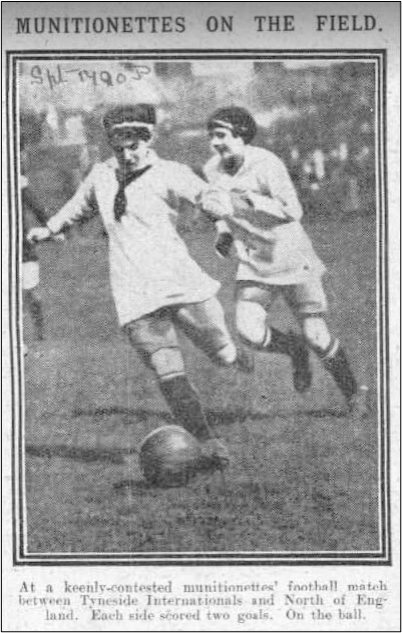
Action Shot from Daily Mirror
Source: BNA Daily Mirror Tuesday 4 June 1918 p5
Winnie McKenna Scores 2 against the ‘Internationals’
This game was played at St James Park in aid of the Comrades of Great War and over £100 was raised. The Daily Gazette for Middlesbrough was pleased that five players from Teesside were honoured with selection to play what was referred to as the ‘Internationals’. The game was important enough to feature in the Daily Mirror. I love this fabulous action shot with the rather fetching necktie!
‘Tyneside Internationals’

Match Report Source: BNA Newcastle Daily Chronicle Monday 3 June 1918 p3
“McKenna with a Good Shot”
As I explained in Part 1. When the Dick Kerr Ladies were having their first game on Christmas Day in 1917 the northeast munitionettes were playing an ‘international’ at Windsor Park in Belfast on the next day. On the 15th December there had been a ‘Possibles’ vs ‘Probables’ game at Wallsend Slipway and she wasn’t present. On 22 December she Captained Wearside Ladies in their 2 v 4 defeat to Teesside Ladies and scored both goals. It is a puzzle as to why she wasn’t even in the trial game, which she certainly deserved to be. I suppose that one of the joys of being a football supporter is the endless hours in the pub debating team selection! The reason then, that the Tyneside team was promoted as the Internationals was that they had all represented the northeast in this famous and groundbreaking ‘international’.
1918 Saturday July 20 – North England 3 v 2 West Scotland – Crowd 4,000

Teamlist for North of England
Source: BNA Newcastle Daily Chronicle Saturday 20 July 1918 p3
“The Outstanding Players were Lyons, McKenna, Dorrian, and Cornforth”
Just look at this forward line!:
Mary Dorrian (Brown’s, West Hartlepool)
Winnie McKenna – Captain (Bolckow’s, South Bank)
Bella Reay (Blyth Spartans)
Mary Lyons (Palmers, Jarrow)
Lizzie McConnell (Wallsend Slipway)
This was another fascinating game at St James Park. It can be seen just how good munitionettes football was in Scotland that the match nearly ended in a draw. The West of Scotland team were on holiday at Whitley Bay. On Friday they stayed at the Douglas Hotel in Newcastle and enjoyed a night at the Empire Theatre. The game was fiercely contested with the referee having to speak to a couple of the Scottish players about their temperamental play. Once again captain Winnie McKenna is picked out in the match report in the Newcastle Daily Chronicle:
“… then Winnie McKenna equalised with a beauty.”
The Scottish team was listed as: Jean Brown (Cardonald, Govan), Dolly Cookson (Inchinnan, Paisley), Rosina Clark (Clydesdale), Ruby Wilson (Mossend, Bellshill), Maggie Devlin – Captain (Cardonald, Clydesdale), Jean Wilson (Cardonald, Glasgow), Agnes Connell (Mossend, Carfin), Bella Renwick (Mossend, Motherwell), Robina Murdoch (Mossend, Motherwell), Nellie McKenzie (Cardonald, Glasgow), Lizzie McWilliams (Clydesdale).
Jean Brown, Dolly Cookson, Maggie Devlin and Robina Murdoch were reported as the best Scottish players.
There is a fascinating piece of extra detail in the team list. Dolly Cookson is described as the “late captain of Vickers FC Barrow”. One of my reasons for singling out Winnie McKenna in this series of articles is to illustrate the formidable links between the northeast and northwest of England, Scotland and Northern Ireland and Ireland.
1918 Saturday 2 March – England 4 v 0 Scotland

‘Scotland’ Football Team (Actually Beardmores, Glasgow)
Source: Lizzy Ashcroft Collection
15,000 at Parkhead, Celtic, Glasgow
The Beardmore News quoted the above attendance. It also produced the following poem:
The English girls in jerseys blue
Looked tidy, smart, and braw,
And showed their Scotch sisters
They were champions o’ the baw
All honour to these girls,
In a clever style they won,
They fairly beat the Scotch team
By four goals to one.
Let’s hope the day may come,
When with pride it may be said,
The highest honours are being won
By the girls in jersey red.
So dinna be doonhearted,
But cheer up and come awa,
You yet may snatch the laurels
From those champions o’ the baw
RICHARD ROSS
Two Extremely Rare Postcards
The Lizzy Ashcroft Collection is one of the foremost pre-WW2 collections of women’s football memorabilia in private hands. I have shared one image above (apologies for the deliberately poor scan). I think that the pair (I have the ‘England’ i.e. the Vickers Barrow card as well) are amongst the most valuable and rare items in the collection. Women’s football postcards from WW1 are rare generally. To see cards which claim to be ‘England v Scotland’ from WW1 is almost unheard of.
Vickers Barrow FC
Vickers Barrow and Vickers YWCA were two very important teams in munitionettes football during WW1. They played a number of high profile games including: Whitehaven, Armstrong Whitworth (Newcastle), Beardmores, National Projectile Factory Lancaster and Dick Kerr Ladies. They played games in Millom, Whitehaven, Glasgow, Preston and Newcastle. As I said earlier, we are only just beginning to scratch the surface of women’s football during WW1.
My thanks to Dr Nina Baker for sharing her research on Beardmores and Vickers Barrow FC with me. This is the source of the fabulous poem above.
A Game for Rough Girls

A Game for Rough Girls
By Tara Lynne O’Neill
“Belfast – A City Divided by War but United by Sport”
The book of the play. Quoted from Amazon:
‘Football is all very well as a game for Rough Girls but it is hardly suitable for delicate boys.’
Oscar Wilde
The making of Belfast’s first all-female football team. This is the untold story of the Belfast women who stepped onto a pitch in society-shocking shorts and footie boots, a ball at their feet and a point to prove. They were the suffragettes of soccer. Rebels with a ball, who kept kicking their way through the outraged defence of a male-dominated game to raise thousands for those returning from war. Set in Belfast 1917 – 1921 in a city divided by war but still united by sport, the play chronicles the courage and determination of those girls. This original Belfast story based on true events will resonate with the history of the city and chime with the recent equality movements across the sports industry and the cultural sector. This ambitious, large-scale play features an impressive eleven strong female ensemble with live music creating the heartbeat of the city at the time. This edition was published to coincide with the world premiere at Belfast’s Lyric Theatre in September 2021.
The play was shown on TV and is fabulous.
Patrick Brennan – Legend of Women’s Football

My Well-Thumbed Copy of Patrick’s Groundbreaking Work
Source: Courtesy Patrick Brennan
Standing the Test of Time
I really probably don’t need to say too much about Patrick’s work, the picture above shows how amazing it is. His website ‘Donmouth’ is brilliant. What is more amazing even, is how it has stood the test of time. The northeast newspapers are really challenging to search online because of the poor quality of the print, even with the help of Patrick’s meticulous work.
Conclusion to Part 3

St Helens – Munitionettes to Post War Team
Source: Lizzy Ashcroft Collection
Remembering Remarkable Women
The first point that I would like to make is that there were an awful lot of remarkable women footballers. Like my granny they lived through two World Wars, the 1926 General Strike, the 1929 Wall Street Crash, the ‘hungry thirties’ and the vagaries of their men-folk. There are a couple of points that I would like to make.
We will only ever get a ‘patchy’ and incomplete view of women’s football history. We are very reliant now on what appeared in the newspapers. This means that the model of ‘high profile’ women’s football for charity is most easiest (ie least challenging) to research and remember. However, there are many factors. I am conscious that other fantastic names have surfaced in these articles such as Mary Lyons of Jarrow and I have not been able to do her justice in this short treatment. Equally, forwards tend to get their name in the papers and I wonder if Winnie would have been the subject of my praise if she was an equally talented defender – I think almost certainly not. Then there is location. Preston is ‘football town’ and the Lancashire Evening Post is a Preston paper so WW1 football can be researched. The other great team of the era, St Helens from where my granny hails is ‘rugby town’. The papers are rugby papers. There was a lively munitionettes scene in St Helens but we may never be able to find out too much about it. How I wish that Patrick Brennan was from St Helens and not the northeast.
Article © Steve Bolton March 2023

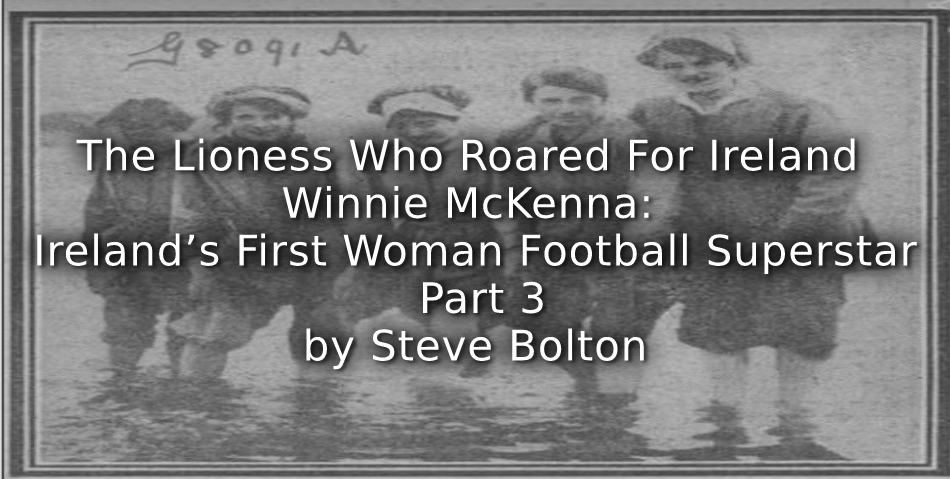


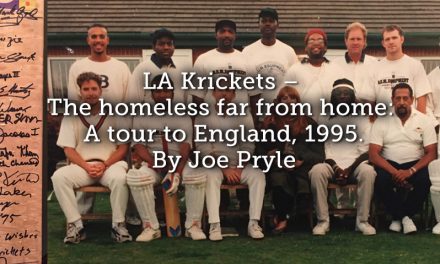

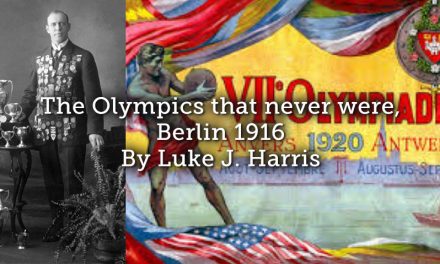
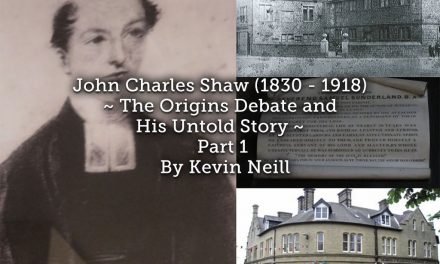
Hi Steve
Enjoyed this article too. You’ve probably read Patrick Brennan’s book The Munitionettes, which documents Women’s football in the NE during WW1. He also had a paper on the Munitionettes Cup (1917-18) in Soccer History 2008, vol 18. It is amazing that the cup in its first year raised over £1,500 for charities. Winnie played for a Teesside club, Bolckow & Vaughan. I’ve always tried to avoid publishing much academic stuff on soccer, as it’s a very crowded field, but I remember when reading the above wondering if she was actually working there. However teams at that time sometimes had guest players. Winnie was clearly well known as at Middlesbrough’s Ayresome Park ground as Winnie was cheered every time she got the ball. Where WAS she working then?
Hi Mike
My friend Margaret has helped with her genealogy. Half the family worked at Bolckow Vaughan. I am going to cover this in Parts 3, 4, 5, etc. These will not be published for a while as some in-depth research is needed.
Regards
Steve